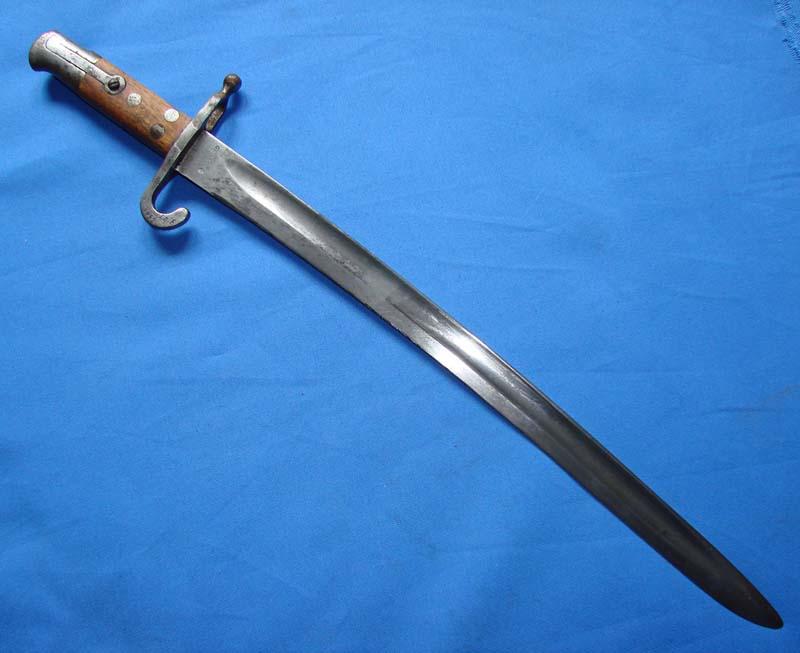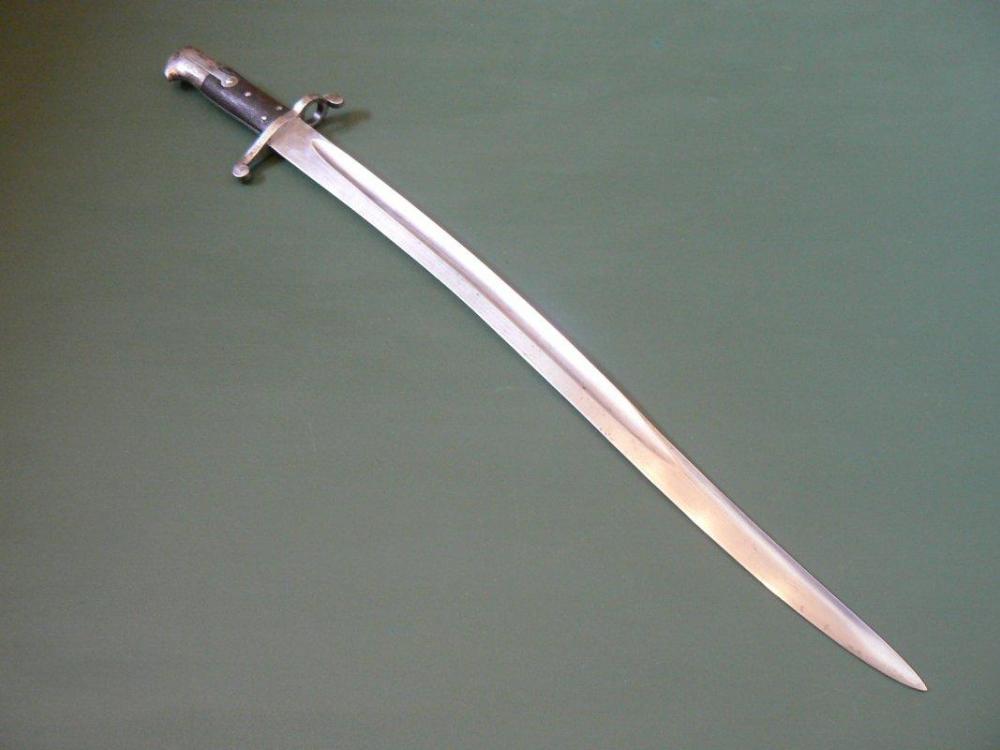-
Posts
4,862 -
Joined
-
Last visited
-
Days Won
15
Content Type
Profiles
Forums
Blogs
Gallery
Events
Store
Posts posted by peter monahan
-
-
It looks like 'SCOOLER' to me, but that's just a guess and I'm afraid I don't have the resources to search for anyone whose service is that late.
0 -
-
7 hours ago, Nightbreak said:
May have moved to the States or to the UK and just had his medal sent on to him there.
Or further west in Canada - the Prairies were beginning to open up to homesteaders by the 1880s - 90s. And, as you say, moving from Canada to the US and vice-versa was quite common.
0 -
In the Great War, a BQMS would have worn three stripes, point down, with a crown above them. This was one of the few appointments which the Canadians classified as a 'staff sergeant' but, unlike later American practice, did not use reversed chevrons and so on to distinguish the specialist staff from those in a regimental/battery chain of command.
0 -
Very nice! presumably it was made for a regimental chapel, or chaplain. Did you find it in Germany? I know a whack of stuff wound up on the local market there when some of the BAOR units cleared out decades of stores prior to leaving for good.
0 -
On 03/04/2019 at 14:23, Nightbreak said:
You're looking for Thomas J. Everett in or around Prescott, Ontario.
In the 1871 Census, that's who we find. 21 year old Thomas J Everett, a Farmer in Hawksbury East, Prescott.
No sign of him in the 1881 or 1891 Census, though, oddly. Because the medal would have had to be claimed by him in 1899 or later.
I dabble in genealogy - as it applies to military service and medals - and I am often surprised by how many people are missing from Census reports, before, after or between counts in which they do appear. Sadly, between transcription errors, missed households and those who moved - more common than we think, I suspect - it's not uncommon to find this kind of gap. If Everett was a farmer but not an eldest son, for example, he may well have left his home district to find his own land in another area. Or he just got missed. Interesting puzzle!
0 -
I agree with Paul - that will give you something you can carry about tio shops and shows and in most cases will give enough magnification. A stereo magnifier might be useful for checking to see a medal hasn't been re-named or enamel repaired/changed, but to me it seems a bit 'overkill' for most situations. I use the 8X magnifying glass which came with my two volume [8 photo reduced pages per leaf] Complete Oxford English Dictionary.
0 -
Gordon
The nickname thing is universal in 'shallow gene pools', I think. I was raised in 'New Scotland' [Nova Scotia, Canada] and 2,000 of the 3,000 people in my town were MacDonalds Most had what the Gaelic speakers call 'side names' - Black Donald, Tall Donald, Awkward Donald, etc. My favourite was 'Mrs Doctor Macdonald' and the widow known as 'Mrs D.D. [dead doctor] Macdonald' to distinguish her from the live doctor's spouse. That was over 50 years ago and when I was back last year, everyone in town still refers to 'Angus D.D., Jimmy D.D. and 'Phyllis D.D. aka 'Fiddledeedee'. True story!
A friend is of Acadian descent and tried to research 'Joseph Marie Chiasson' - his own name and that of a great grandfather. The Acadian History Centre said 'we have 86 of them' but when he mentioned that the man was also called 'Joe Gickum' the response was 'Oh, sure. We know him.'

I can only imagine what the conditions were like in the POW camps. I still recall the first time I watched 'Breaker Morant' and his defence lawyer explained what he'd been doing before he was called to the trial 'rounding up Boer women and children, burning their homes and poisoning their wells' or words to that effect. I always mentioned to my history students that 'concentration camps' were NOT a German invention.
Take care.
Peter
0 -
Can't see any pictures, Blueman.
 0
0 -
Very nice indeed, and certainly not your run of the mill 'WWI group'. Pity about the missing two.
0 -
21 hours ago, Wessel Gordon said:
The individual that I spotted on the site you provided carries the ''family names'' of the family of my great-grandfather. That basically means he carried the same names as his father or paternal grandfather in the case of an eldest son. Second sons would carry the names of their maternal grandfather and additional sons would carry the names of their father's brother, then mother's brother in rotation.
That must be a real boon to genealogists! The Irish and Scots, typically, were nowhere near that methodical!

While researching the names on my local WWI war memorials I discovered any number of identical names - 1st, 1st & 2nd and even Occasionally 1st, 2nd & 3rd - who were uncle and nephew or first cousins or grandsons, as often as father and son.
 0
0 -
The frustration of being the first in a family to care! I'm currently tracking down details on a WWII casualty, grand-uncle of a young work colleague. All he has is a name, an obituary notice and the death date. The good news is that the man's file is available, the bad news is that he wasn't 16 when he joined, as per family legend, that he probably burned to death in a truck, so all his personal kit was lost, and that the family DID get his medals but...

Good luck with the hunt. I have no idea how many surnames Boers shared, so can't comment on whether the two would be related but, 'never know your luck;, as granny said.

Peter
0 -
My first reaction was "Aha! A Martini Henry yataghan blade. My very favourite bayonet!' But, obviously, the German makers marks suggest otherwise. But... many British bayonets were made in Germany. In fact there was a scandal during the Sudan campaign regarding German made blades which bent in use!
And here it is! https://www.bygoneblades.com/buy-british-p1860-martini-henry-yataghan-sword-bayonet
From what I can see in a quick search, the Werndl bayonet had wooden grips and a pronounced hook on the lower guard. See below: Werndl on top 'Tini below.
0 -
BB
I suspect there are better places than this one to look. My impression is that many of our members are interested in earlier periods and odd collecting fields, and that not very many of us are firearms collectors. Sorry, mate.

Good luck with the search though.
Peter
0 -
Interesting! When I searched 'Boer POWs', 'Boer Pows in Ceylon popped up first. There are lots of sites with some general information but the one below is clearly the result of a concerted effort: actually includes some POW names and information. I'd suggest you start there. And good luck with the hunt!
https://www.geni.com/projects/Anglo-Boere-Oorlog-Boer-War-1899-1902-POW-Ceylon/14300
Peter
1 -
The RWAFF consisted of 28 battalions by 1945 and served as a cadre for the formation of 81st (West Africa) Division and 82nd (West Africa) Division. Both divisions saw service during the Second World War, serving in Italian Somaliland, Abyssinia, and Burma. I actually had the pleasure of meeting 2-3 veterans of the Burma campaign when I lived in Nigeria in the early '80s.
If you google "slouch hat RWAFF" you see a number of photos, Many of the examples share the triangular flash but each has a different set of small coloured rectangles at the bottom of the triangle. My guess is that these indicate which regiment the wearer belonged to but haven't had the time to pursude that theory. Nor, to be honest, am I sure where one would start. The history of the RWAFF is fairly sparse, but in 2002 someone in the UK launched a Journal devoted to its history, which is referred to here: https://specialcollections-blog.lib.cam.ac.uk/?p=987. The IWM has a two volume history of the Nigeria Regiment but it was published in the 1930s. Good luck with the hunt, if you choose to pursue it!
Peter
0 -
Very nice indeed! And welcome to the GMIC.
Peter
0 -
That's what I'd do too! Never served myself, either, but have been studying and talking/writing about military history for 'a few decades' now.
 Good luck with your passion!
Good luck with your passion!
Peter
0 -
Here's a brief synopsis of their service, from this site: https://www.wartimememoriesproject.com/greatwar/allied/battalion.php?pid=713
If he was ill/wounded in '16 and declared medically unfit for further service, I'd assume that explains his being sent to the APC. Maybe a clerk in Civvy street?
0 -
Wessel
Welcome to the GMIC! I think the answer to your question must lie in the dress regulations of whichever country the putative wearer of the medals is from/representing. In other words, if all these were awarded to a South African, according to the SA regs. If to a Brit, I strongly suspect the order would be British, SA, US. If to an American... US first and ??? after thagt.
The old British Indian Army is a life long hobby of mine I remember, decAdes ago now, my shock on seeing a member of our Corps Of Commissionaire's - a security force at airports and government buildings recruited from ex-servicemen - who was wearing three or four WWII medals after his post-Independence Indian Army awards. He'd obviously stayed in the IA into the '50s and so the order was correct, in that technically the WWII stars were 'foreign awards' after 1947.
If, on the other hand, these medals simply represent a series of senior awards from various nations, my personal tendency would be to group them by nation in order of the seniority / importance within each nation, but that's an entirely personal choice.
I hope others will chime in, as I suspect they will! Again, welcome to the GMIC.
Peter
0 -
I quite like the three arm shield collages. Nicely done!
0 -
Mike
Welcome to the GMIC! I hope one of our members is able to help and, in fact, think there is some reasonable chance that may happen. I continue to be amazed by the breadth [and depth] of knowledge on such admittedly obscure topics.
Good luck with the research!
Peter
0 -
Nothing too obscure for our members!
 0
0 -
Quite an unusual crown, which may help ID the nation involved. As Jerry says, possibly Belgian/Dutch or some such.
0






Researching Medals Awarded to Canadian Soldiers
in The Great War 1914 to 1918
Posted
I just saw this post, but Nightbreak has answered the question: the medal entitlement is in the individual service records but no consolidated file is yet available on line. Given the staff cuts at LAC, you were lucky to get his service record so promptly too. Most of the medals seem to have been sent out in 1921-22, based on a sampling of 3-400 records I dealt with a couple of years ago.